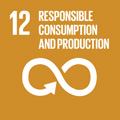- Docente: Marco Visentin
- Credits: 6
- SSD: SECS-P/08
- Language: English
- Teaching Mode: In-person learning (entirely or partially)
- Campus: Rimini
- Corso: Second cycle degree programme (LM) in Business Administration and Management (cod. 8842)
Learning outcomes
The purpose of the course is to make participants understand and appreciate the relative strengths and weaknesses of a variety of customer satisfaction measurement approaches and instruments available today. A key element in this process is measuring customer satisfaction through market research. As such, the course will focus on the understanding and the actual implementation of the customer satisfaction measurement practices currently employed in business environment. Customer dissatisfaction and complaint management techniques will also be explored and critically evaluated.
Course contents
-Customer Satisfaction and Relational Satisfaction. Economic Satisfaction and Social Satisfaction
- Relational dynamics and trajectories (B2B and B2c)
- Service quality, customer satisfaction, repurchase intentions.
- Introdution to writing a questionnaire. Preliminary qualitative analysis. Definition of constructs and scales.
- Using R. T-test, Chi-squared test, ANOVA.
- Primary data analysis: Exploratory factor analysis, Cronbach's Alpha.
- Importance/Performance matrices- Practical application: kick-off of group project (4/6 members) which includes a field research with data collection and analysis.
Readings/Bibliography
Carman, J. M. (1990). Consumer Perceptions Of Service Quality: An Assessment Of T. Journal of retailing, 66(1), 33.
Colucci, M. & Visentin, M. (2017). Style and substance: a case study of the expansion of mature business-to-business relationships in the Italian clothing industry. Journal of Business & Industrial Marketing, 32(1), 153-166.
Cronbach, L. J. (1951). Coefficient alpha and the internal structure of tests. psychometrika, 16(3), 297-334.
Cronin Jr, J. J., & Taylor, S. A. (1992). Measuring service quality: a reexamination and extension. The journal of marketing, 55-68.
Cronin Jr, J. J., & Taylor, S. A. (1994). SERVPERF versus SERVQUAL: reconciling performance-based and perceptions-minus-expectations measurement of service quality. The Journal of Marketing, 125-131.
Johnson, D., & Grayson, K. (2005). Cognitive and affective trust in service relationships. Journal of Business research, 58(4), 500-507.
Parasuraman, A., Zeithaml, V. A., & Berry, L. L. (1988). Servqual: A multiple-item scale for measuring consumer perc. Journal of retailing, 64(1), 12.
Parasuraman, A., Berry, L. L., & Zeithaml, V. A. (1991). Refinement and reassessment of the SERVQUAL scale. Journal of retailing, 67(4), 420.
Shamsollahi, A., Chmielewski-Raimondo, D. A., Bell, S. J., & Kachouie, R. (2021). Buyer–supplier relationship dynamics: A systematic review. Journal of the Academy of Marketing Science, 49, 418-436.
Venables, W. N., & Ripley, B. D. (2013). Modern applied statistics with S-PLUS. Springer Science & Business Media.
Visentin, M., & Scarpi, D. (2012). Determinants and mediators of the intention to upgrade the contract in buyer–seller relationships. Industrial Marketing Management, 41(7), 1133-1141.
Additional references, lecture slides and scripts executed will be available on virtual resources.
Teaching methods
Classical teaching.
Lab sessions.
Group project, including:
- the definition of an topic to investigate and the analysis of the data needed;
- the analysis of the literature and an exploratory analysis (in-depth interviews and focus groups) of the empirical context.
The project is preliminar to a survey conducted during the second module.
Assessment methods
For the students participating in a group project, the verification will be done at the end of the second module. Each group must provide, at least one day before the presentation:
- the data and the R code;
- a short document (max 10 pages, Times New Roman 11, line spacing 1, standard margins) in which it is explained how the results were reached starting from the analysis of the empirical context;
- the presentation document (for example a PowerPoint
The grading of the project work score is as follows:
- 28-30L project correct, exhaustive, complex, which highlights the complete mastery of the topics covered in the course and a consistent execution ability with any minor inaccuracies;
- 24-27 project not entirely correct and/or incomplete, from which emerges an appreciable degree of knowledge of the topics covered in the course and a good ability of execution;
- 18-23 projects with significant methodological inaccuracies or significant analytical imperfections, which show just sufficient ability of execution;
- 0-17 project inadequate for method setting and/or data analysis.
The group grade is corrected by the evaluation of the group members. Just before the presentation, each member will be asked to evaluate the executive and creative contribution of the other group members. Those who get an average rating from their group members below 10% below the average will receive 10% less than the group's vote.
Non-attending students can take the exam orally as part of the usual exam sessions.
Students dissatisfied with the evaluation obtained from the group project can take the oral exam limited to a single question with the possibility of increasing the final grade of the group project corrected by the evaluation of the other members by a maximum of 2 points.
The oral exam takes place on the topics covered in class and with reference to the material proposed in the bibliography. The graduation of the final grade is as follows:
- 18-19: knowledge of a very limited number of topics covered in the course and analytical skills that emerge only with the help of the teacher, expressed in an overall correct language;
- 20-24: knowledge of a limited number of topics covered in the course and ability to autonomous analysis only on purely executive matters, expression in correct language;
- 25-29: good knowledge of a large number of topics covered in the course, ability to make independent choices of critical analysis, mastery of specific terminology;
- 30-30L: Excellent knowledge of the topics covered in the course, ability to make autonomous choices of critical analysis and connection, full mastery of specific terminology and ability to argue and self-reflection.
Teaching tools
R programming. Script will be provided during lessons and will be available on virtual resources.
Office hours
See the website of Marco Visentin
SDGs




This teaching activity contributes to the achievement of the Sustainable Development Goals of the UN 2030 Agenda.
